Caterpillars, the larvae stage of butterflies and moths, are fascinating creatures with diverse diets based on their species. Known for their voracious eating habits, these creatures play a vital role in the ecosystem as they help pollinate and serve as a food source for various birds and insects. This article will explore the different types of food that caterpillars consume and the factors that determine their preferences.

Most caterpillars primarily feed on plant material, often munching on leaves, flowers, and seeds. Some species have a preference for specific host plants, while others exhibit more flexibility in their dietary choices. The availability of appropriate food sources greatly influences the distribution and abundance of butterflies and moths in a particular area.
A variety of factors dictate the caterpillars’ food choice, ranging from their evolutionary adaptations to environmental conditions. Some caterpillars, like the Wax Moth, are even known to consume honeycomb from beehives. Understanding their diverse diets provides insight into their ecological role and helps in planning suitable habitats to support these valuable creatures in the wild.
Caterpillar Diets
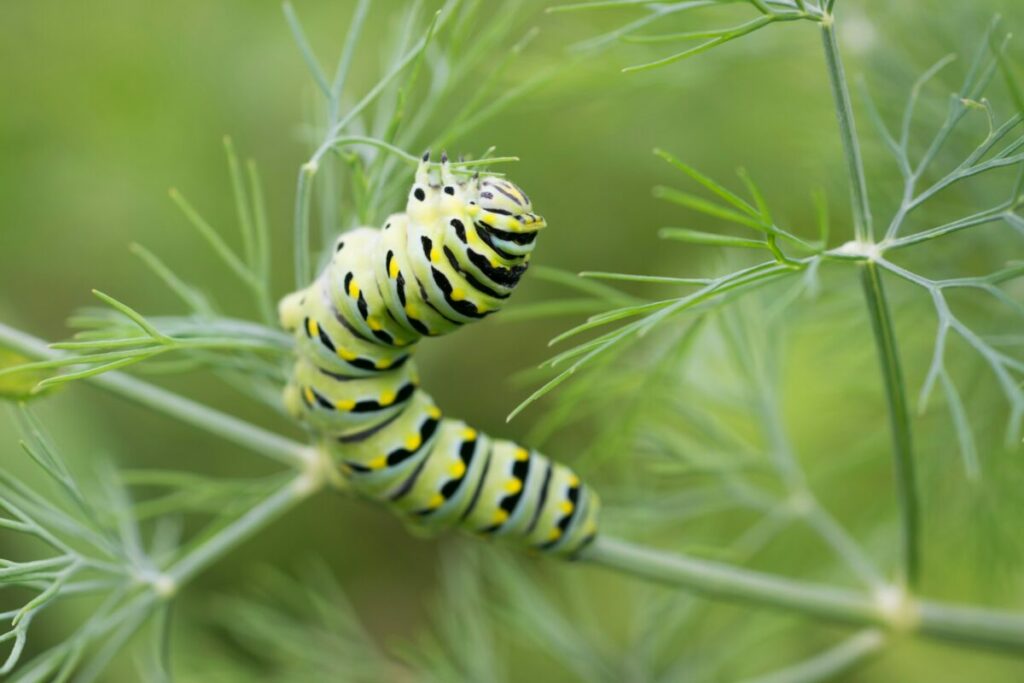
Caterpillars are the larval stage of butterflies and moths, and their primary function is to eat and grow before they transform into adult insects. This section highlights their dietary preferences and habits as herbivores and omnivores.
Herbivores
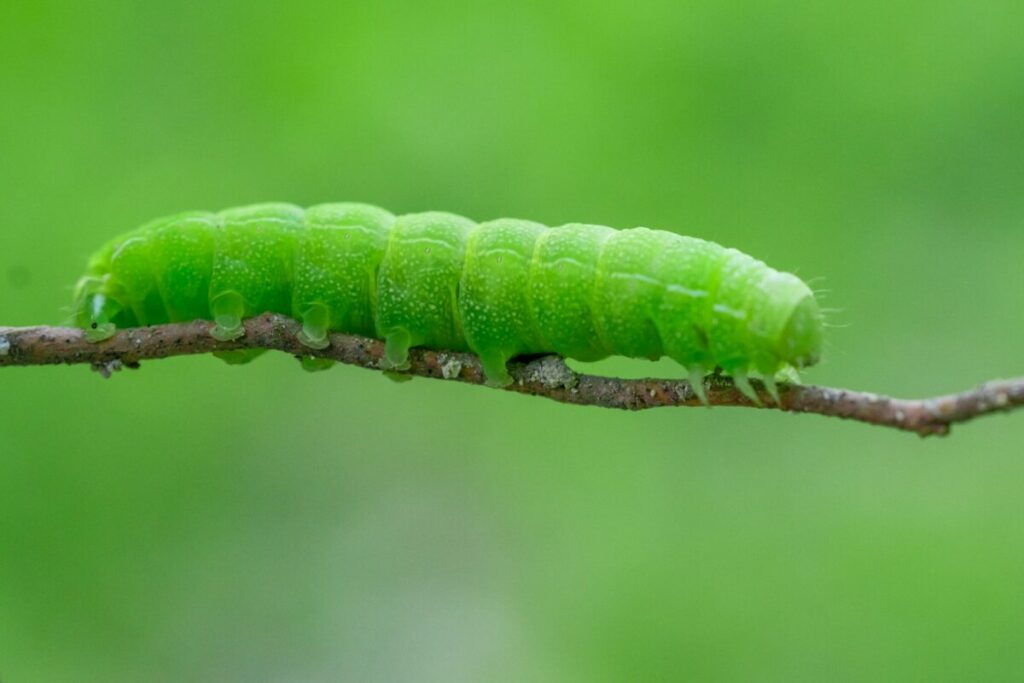
Most caterpillars are herbivores, which means they feed exclusively on plant matter. They are known for consuming various parts of plants, such as leaves, seeds, fruits, vegetables, and wild grasses. Caterpillars have voracious appetites, and a caterpillar infestation in gardens or farms can cause significant damage to plants and crops.
- Leaves: The majority of caterpillars feed on leaves, providing them with essential nutrients required for their growth and development.
- Seeds: Some caterpillars feed on seeds, often causing damage to plants during their reproduction stages.
- Fruits and vegetables: Caterpillars can also consume fruits and vegetables, including cob corn, lettuce, cabbage, apples, pears, and bananas.
- Wild grasses: Some caterpillars have been known to feed on wild grasses, which can make them a nuisance in certain ecosystems.
Omnivores
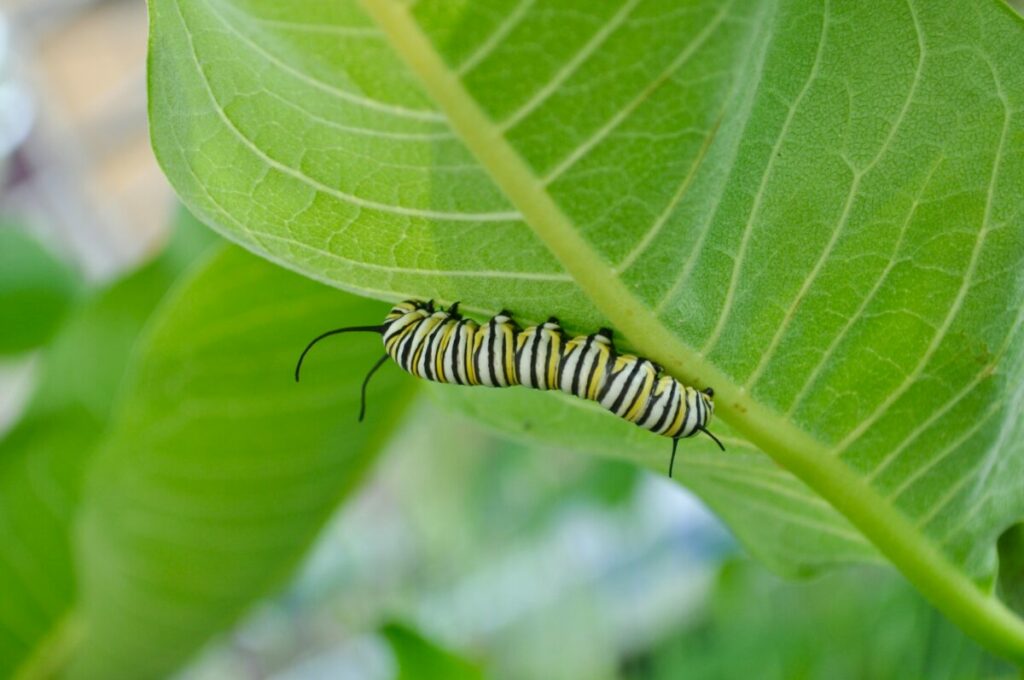
While most caterpillars are strictly herbivores, a few species display omnivorous behaviors. These caterpillars incorporate animal waste and the remains of other caterpillars, worms, or insects into their diet.
- Skin moth caterpillar: This particular species is known for consuming animal waste, which provides them with additional nutrients not found in plant matter.
- Pet caterpillars: Some pet caterpillars have been observed feeding on other caterpillars or worms to supplement their plant-based diet.
In summary, caterpillars primarily consume plants, but a few species may incorporate animal matter into their diets. Understanding these dietary habits can help prevent and manage caterpillar infestations, ensuring the health and survival of plants and ecosystems.
Types of Caterpillars
Butterflies
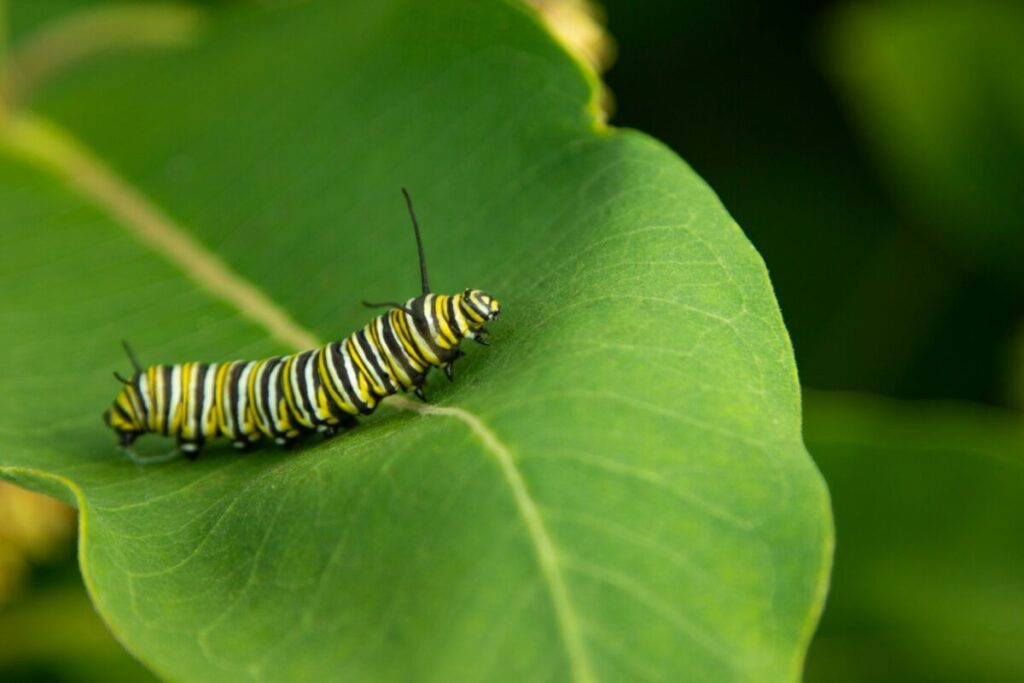
Caterpillars are the larvae of both butterflies and moths. They come in various shapes, sizes, and colors, and have diverse eating habits. The diet of caterpillars varies depending on the species.
For example, the monarch butterfly caterpillar specifically feeds on the foliage of milkweed plants, while the black swallowtail caterpillar consumes members of the parsley family such as parsley, fennel, carrot, dill, and Queen Anne’s lace. Specialist caterpillars like these tend to restrict their diets to smaller, related groups of plants. Some butterfly caterpillars, such as the Acmon Blue, prefer plants like buckwheat, lupines, and milkvetch.
Moths
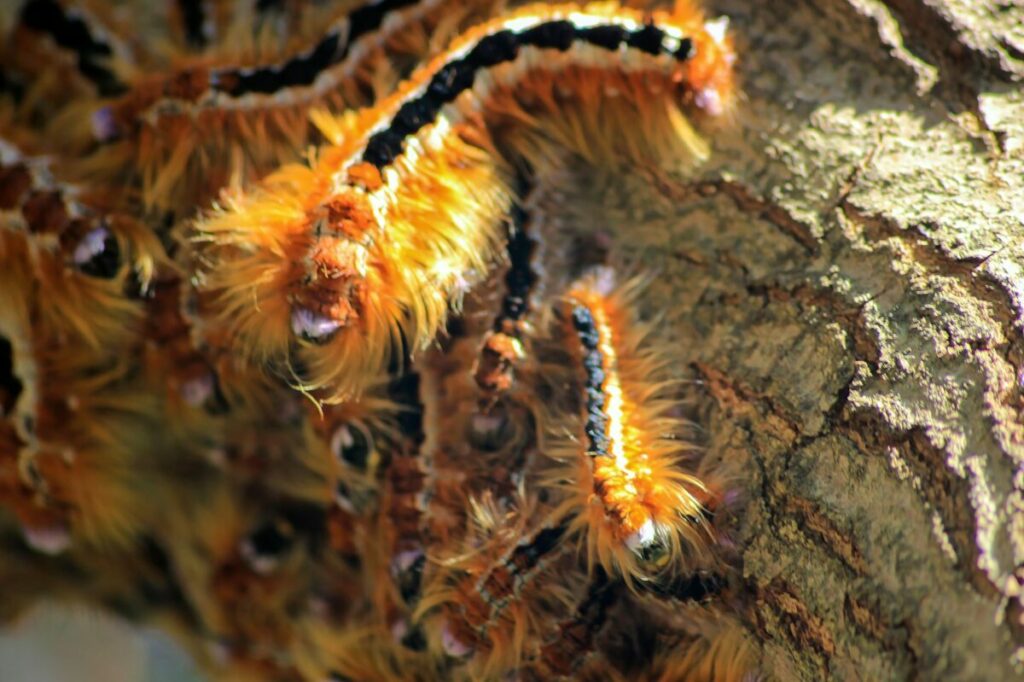
Moth caterpillars also exhibit a wide range of feeding preferences. Some moth caterpillars, like the Wax Moth, have a sweet tooth and invade beehives to lay their eggs in honeycombs. Others feed on various fruits and vegetables like corn, lettuce, cabbage, apples, pears, and bananas. A few moth caterpillars might also consume wild grass, bark and twigs, animal waste, moss and lichen, and even wool or other animal products.
Some species of moth caterpillars, such as clothes moths, feed on wool, while horn moths target the hooves and horns of dead ungulates. Caterpillars can often be voracious feeders, and many of them are considered serious agricultural pests.
Apart from plant-based diets, a few caterpillar species might also feed on other insects, such as ants, or even indulge in cannibalism by consuming other caterpillars. This demonstrates the diversity and adaptability of caterpillars as they navigate different environments and food sources.
Common Plants Caterpillars Eat
Trees and Shrubs
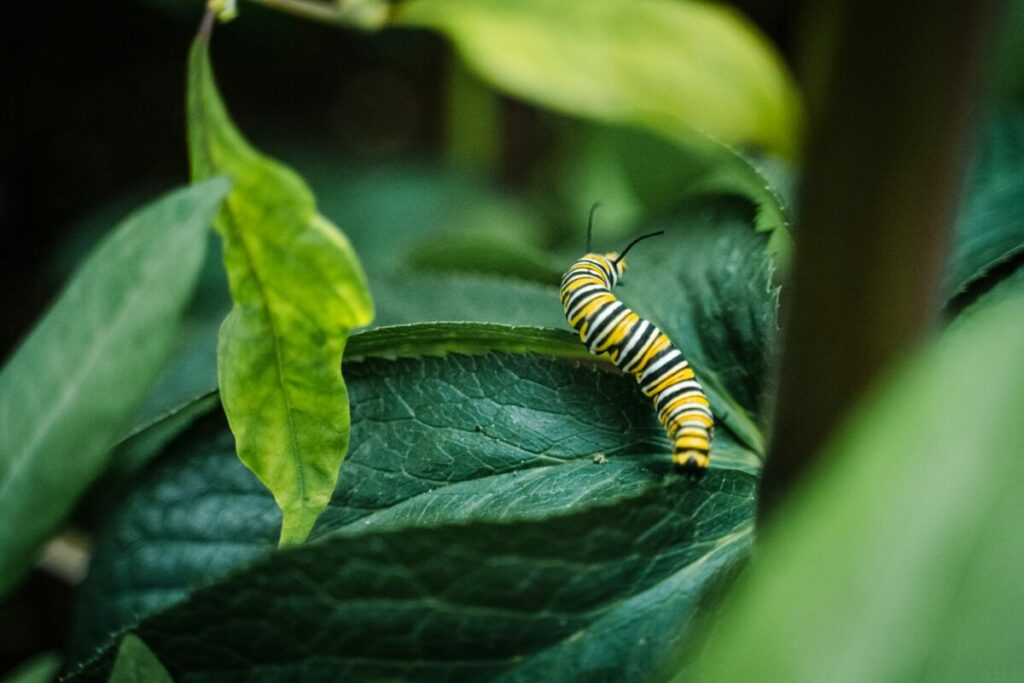
Caterpillars are known to feed on a wide variety of native trees and shrubs, which serve as their primary host plants. Some caterpillars, like the Monarch, prefer specific tree species, such as milkweed plants, to feed on. Oak, willow, cherry, and apple trees are also common host plants for a diverse range of caterpillars, such as the Tiger Swallowtail, which feeds on black cherry, aspen, and birch trees. The Viceroy caterpillar enjoys feeding on the leaves of trees like poplar, elm, and willow. Bark, twigs, apple leaves, and oak leaves also serve as sources of nourishment for caterpillars.
Herbs and Flowers
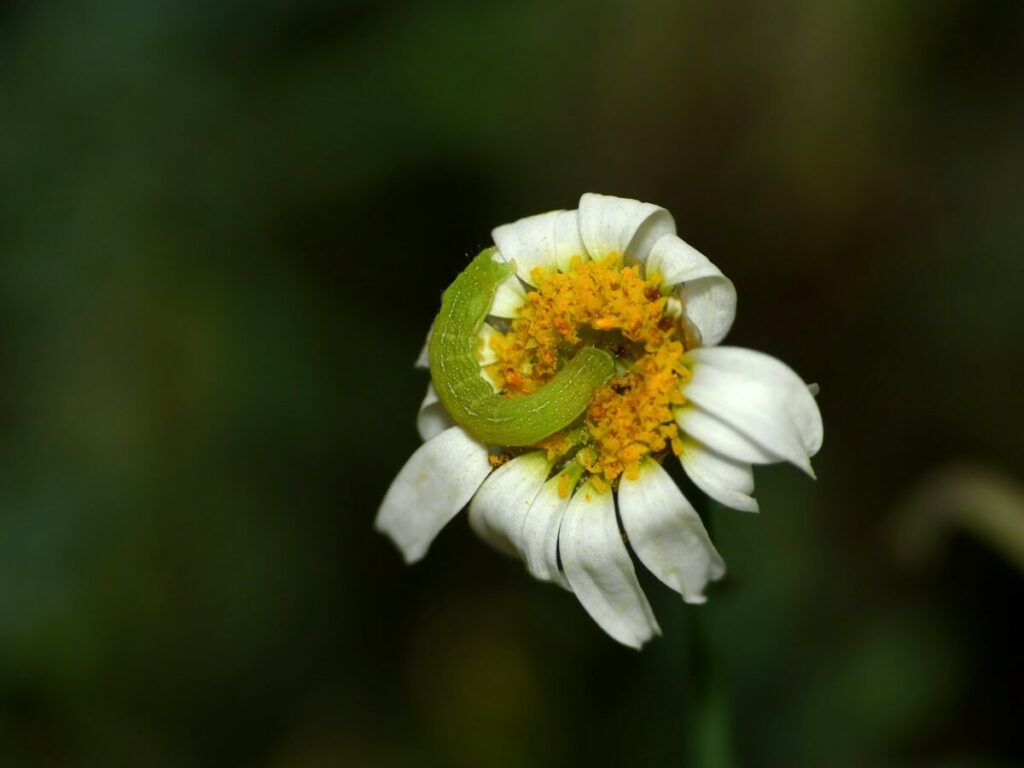
Caterpillars are also associated with consuming various herbs and flowers in their diets, as they rely on these plants for survival. For instance, the Black Swallowtail caterpillar primarily feeds on members of the parsley family, including parsley itself, fennel, carrot, dill, and even Queen Anne’s lace. Flowers such as asters, violets, and milkweeds provide essential nourishment for caterpillars like the Painted Lady, which thrives on thistles, and the Red Admiral, which prefers nettles. Many caterpillars also consume the foliage or flowers of plants such as tulip trees, alder, and everlast.
Grasses and Groundcovers
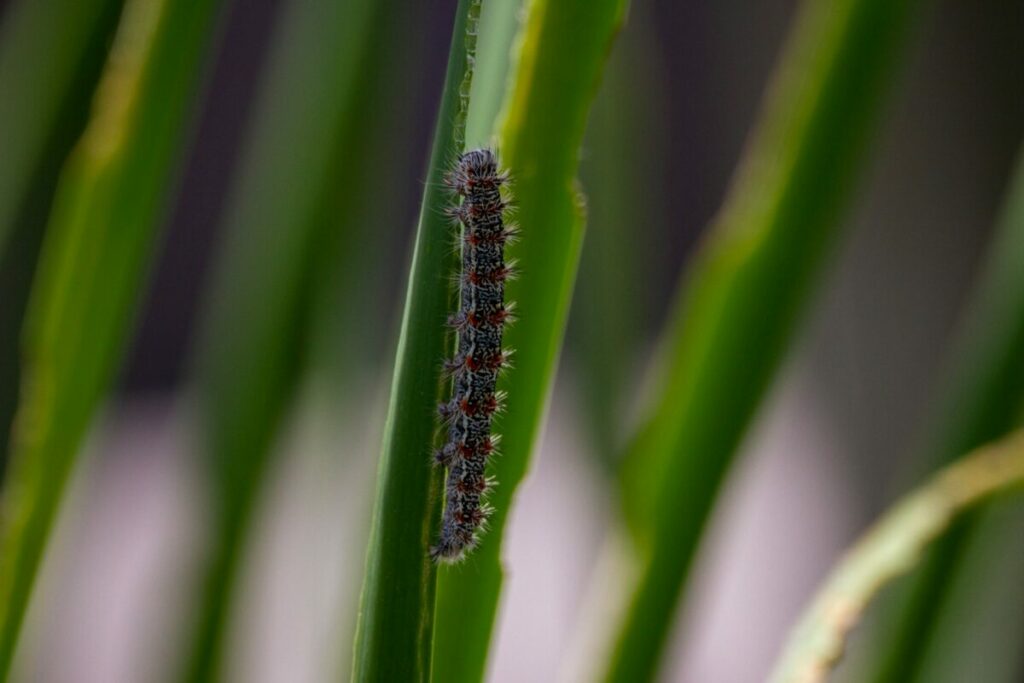
Most caterpillars can be found feeding on various grasses and groundcover plants in their natural habitats. Grasses, clover, wild grass, and moss are all viable food options for numerous caterpillar species. Some caterpillars, like the Monarch, rely on specific plants, such as milkweed, for their survival. These groundcovers also serve as a habitat for other species of caterpillars, which might prefer lichen or bark as a food source.
Caterpillars in Captivity
Providing Proper Food
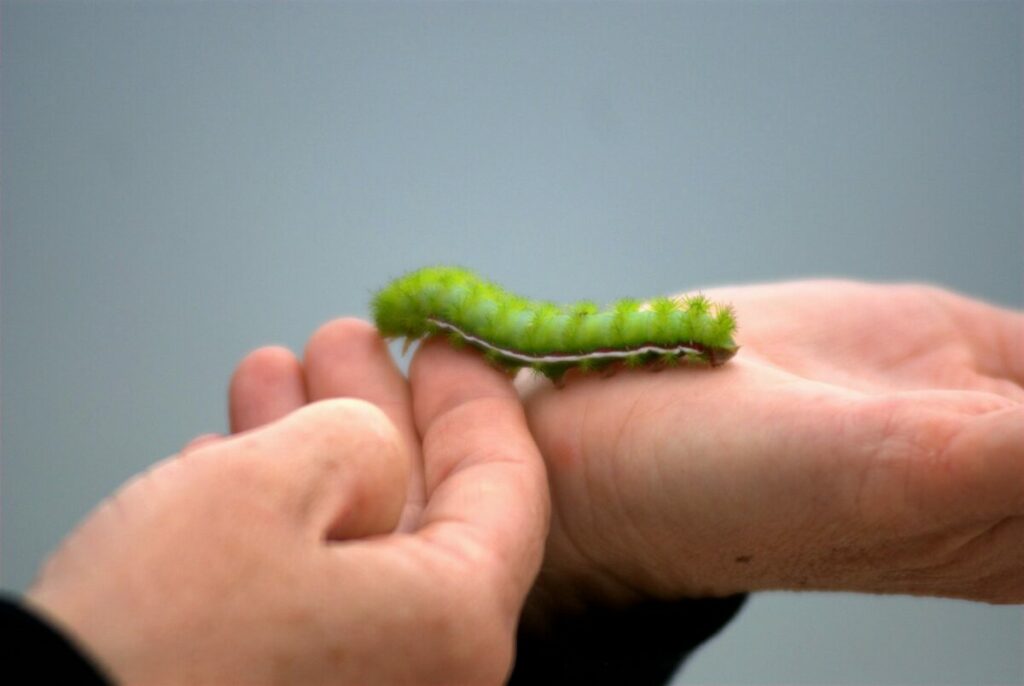
When keeping caterpillars in captivity, it is essential to provide them with the appropriate food. Caterpillars typically eat plant-based foods, such as leaves, fruits, vegetables, and flowers. Some examples include oak leaves, lettuce, cabbage, apples, pears, and bananas. Make sure to identify the specific food plant for the caterpillar species you have, as some are specialists that only feed on certain plants.
Setting up a Container
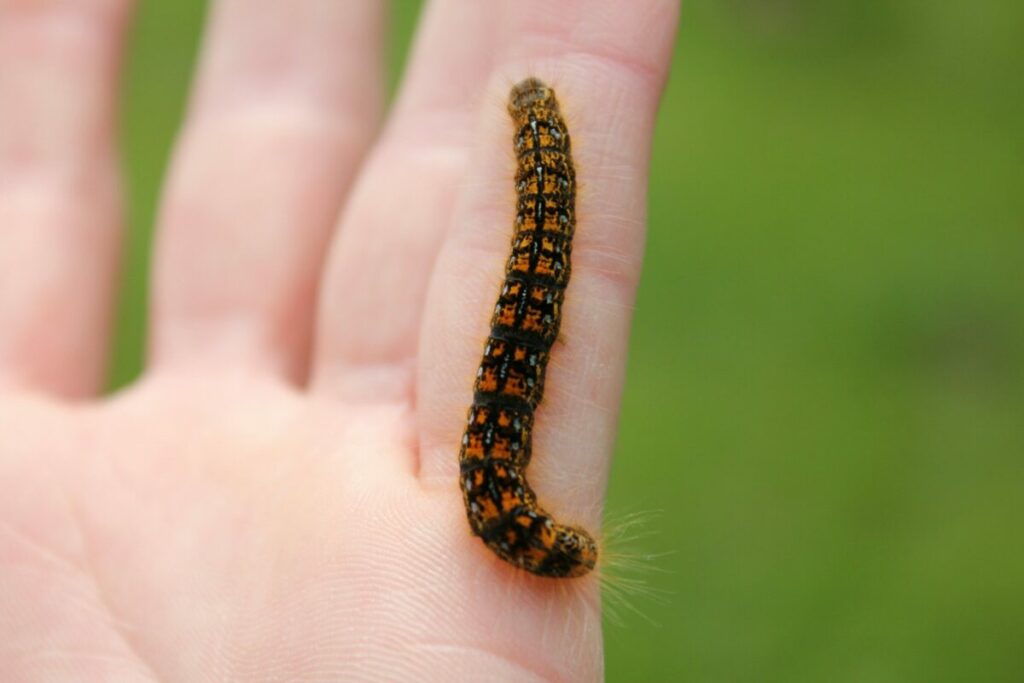
To create a comfortable environment for the caterpillar, set up a container with proper ventilation and enough space for the caterpillar to grow and move around. Add soil to the base of the container, ensuring it is free from pesticides and chemicals. Place small twigs and branches in the container to mimic the caterpillar’s natural habitat and provide a place for them to feed, rest, and pupate.
Keeping the Environment Clean
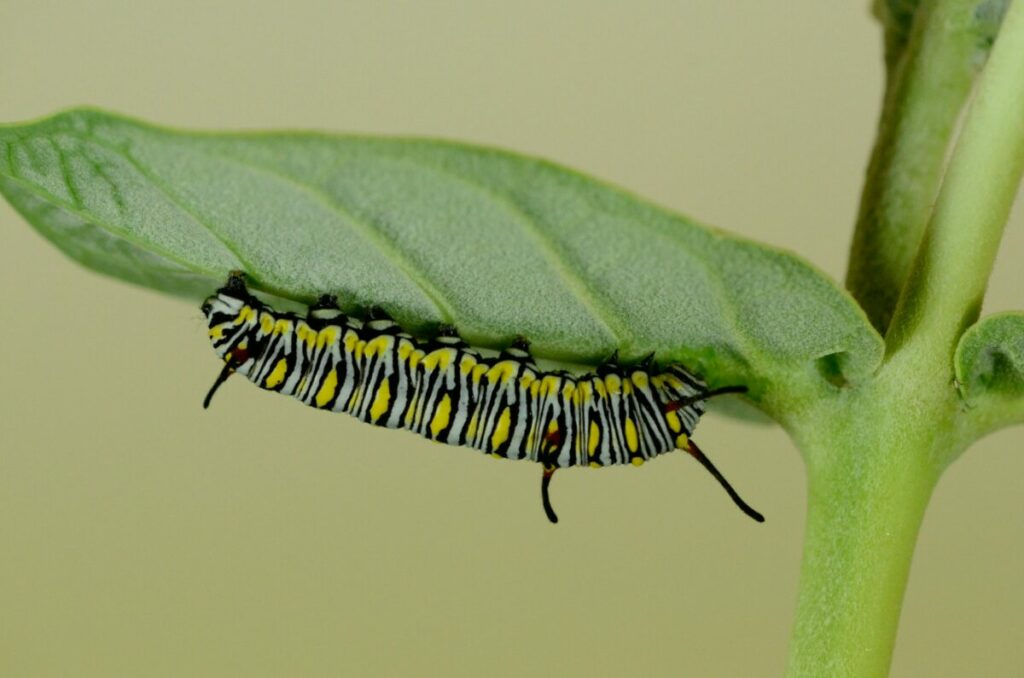
Maintaining a clean environment is crucial for the caterpillar’s health in captivity. Regularly remove any waste, such as caterpillar frass or dead leaves, from the container to prevent the growth of mold and bacteria. Monitor the humidity within the enclosure to keep the space dry and well-ventilated. Replace the caterpillar’s food plant once it has been consumed or shows signs of wilting to ensure the caterpillar is receiving optimal nutrition.
Predators
Caterpillars, being low on the food chain, have a variety of predators that feed on them. Their natural predators can be grouped into birds and mammals, insects, and even other caterpillars.
Birds and Mammals
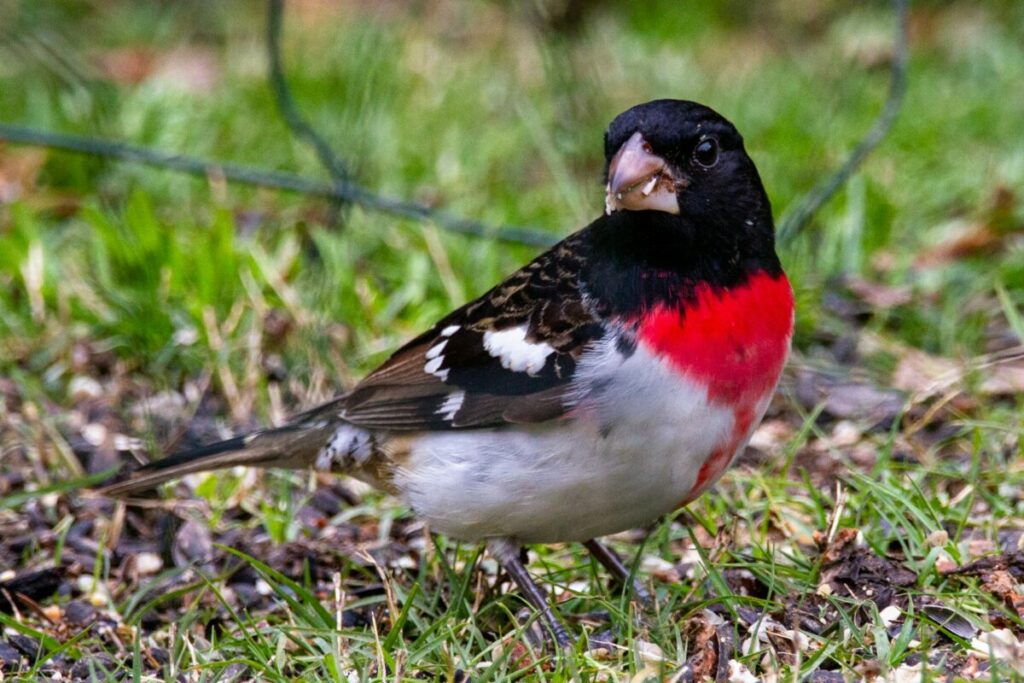
Birds are one of the primary predators of caterpillars. Some species that are known to feed on caterpillars include:
- Grosbeaks
- Tanagers
- Orioles
- Cuckoos
- Warblers
Various mammals also include caterpillars in their diet. Small mammals, such as mice, take advantage of this nutritious food source. Reptiles and amphibians, like lizards and frogs, are other groups of animals that frequently feast on caterpillars.
Insects and Other Caterpillars
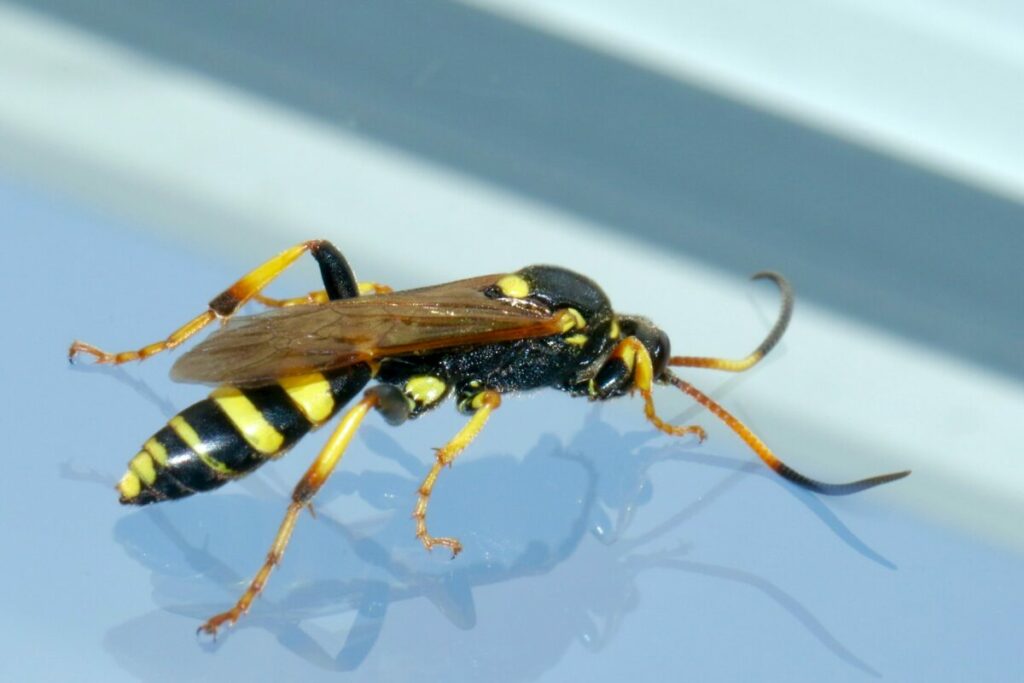
In addition to birds and mammals, insects like ladybird beetles and yellow jackets specialize in eating caterpillars. Wasps are another group of insects that often prey on these larvae, using them as a food source for their own offspring.
Interestingly, some caterpillars have been known to fall victim to cannibalism. In certain circumstances, such as overcrowding or a lack of food, caterpillars might resort to consuming their own kind.
It is important to note that the presence of predators such as birds and insects can help maintain a healthy balance in ecosystems by controlling caterpillar populations. This prevents excessive damage to plant life, as caterpillars are known to feed on leaves and other plant parts.
Ultimately, the variety of predators that prey on caterpillars demonstrates the interconnectedness of the natural world and highlights the importance of maintaining diverse habitats that support a wide range of species.
Metamorphosis
Eggs
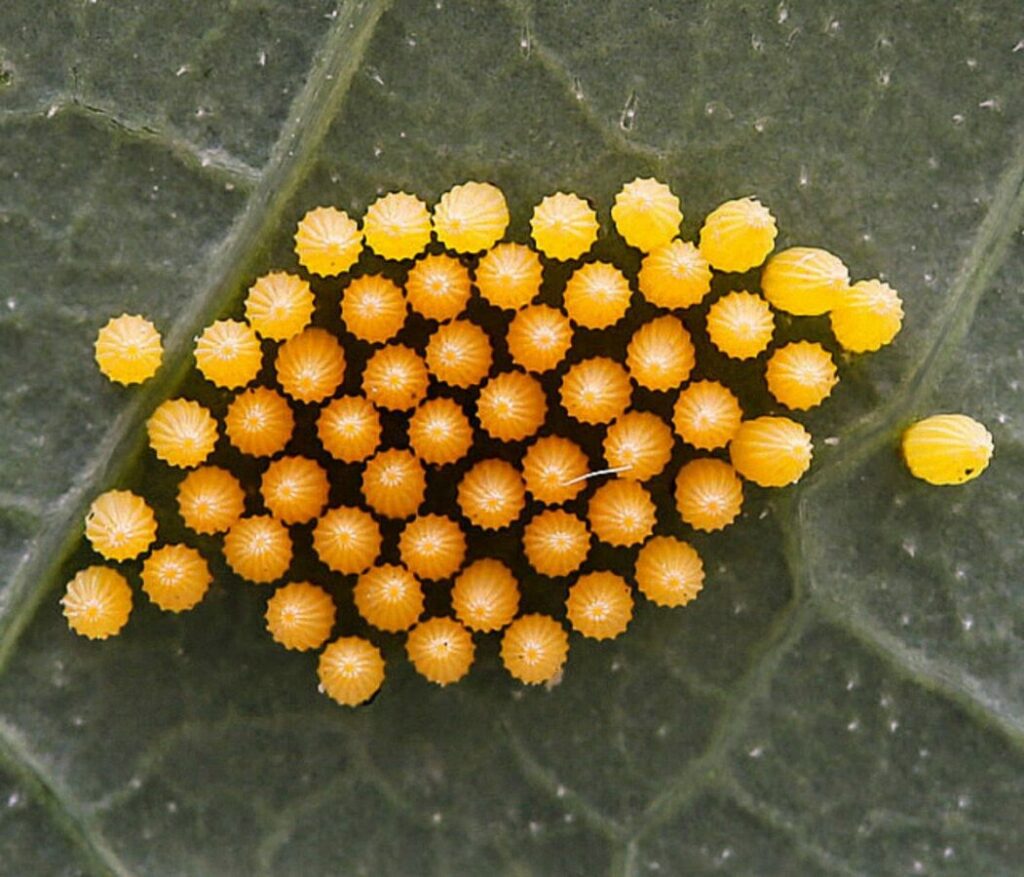
Caterpillars begin their life as eggs. Female butterflies and moths lay their eggs on a host plant, typically on the underside of leaves. The female butterfly uses her instincts to select the best looking plants or food source for her offspring. The host plant provides nutrition for the hatched caterpillars, allowing them to grow and eventually undergo metamorphosis.
Related Resources: Saddleback Caterpillar
Larval Stage
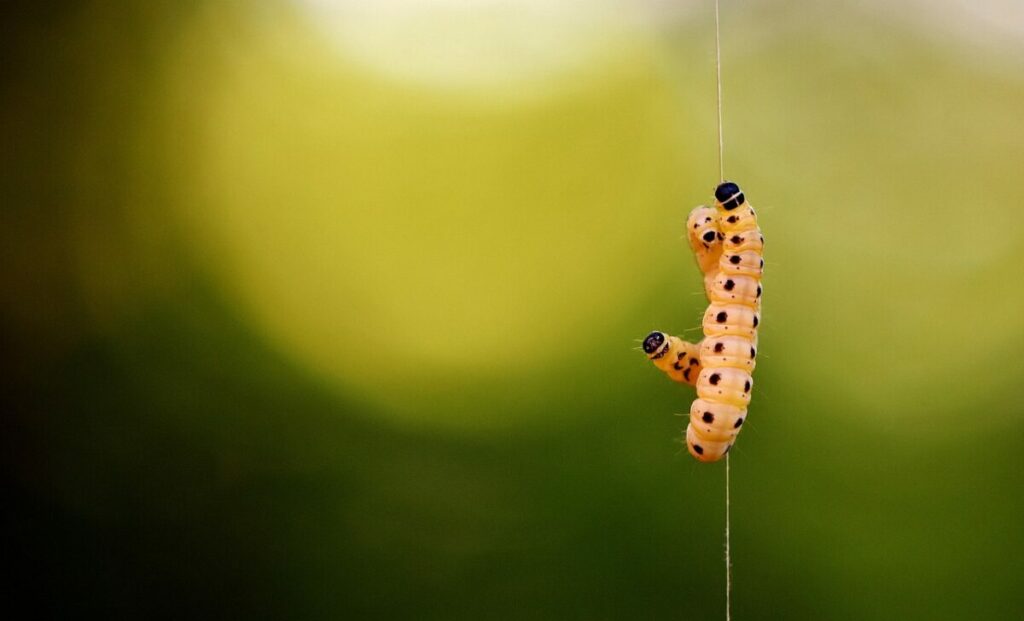
The caterpillar, also known scientifically as larva, feeds on the host plant leaves during this stage. As it consumes the leaves, the caterpillar grows plumper and longer. It undergoes a series of molts, shedding its skin to accommodate its growing body. A well-known example is the monarch caterpillar, which feeds on milkweed plants. This stage is crucial to the caterpillar’s development as it gains the necessary nutrients and energy required for the eventual transformation into a butterfly or moth.
Pupa
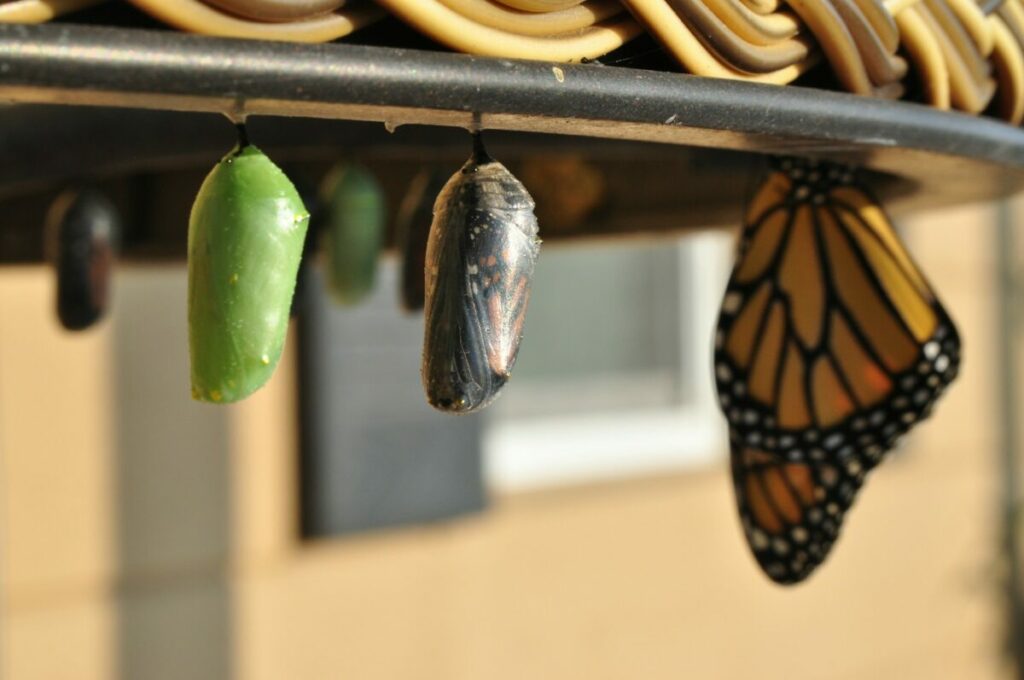
Once the caterpillar reaches an optimal size, it transitions into the pupa stage. This involves creating a protective casing, known as a chrysalis, in which the metamorphosis process occurs. Inside the chrysalis, the caterpillar undergoes a series of remarkable changes. Its body breaks down and rearranges itself into the form of an adult butterfly or moth. This process is completed over a varying period, depending on the species.
Throughout the metamorphosis, the caterpillar transforms from a simple leaf-eating creature into a beautiful, winged insect, capable of pollinating plants and contributing to the balance of ecosystems.
Frequently Asked Questions
What types of leaves are consumed by caterpillars?
Caterpillars, the larvae of butterflies and moths, feed almost exclusively on plants. They typically munch on leaves, but some species may also consume other plant parts like seeds or flowers. Their specific diet depends on the caterpillar species, as different caterpillars have different plant preferences.
Do caterpillars consume fruits?
Yes, some caterpillars enjoy eating fruits and vegetables. Their diet can include cob corn, lettuce, cabbage, apples, pears, bananas, and other fruits or veggies. However, not all caterpillars will consume fruits, as their preferences vary by species.
What is the diet of green caterpillars?
Green caterpillars, like other caterpillars, mostly feed on plant material. Their specific diet depends on the species and the plants available in their environment. Green caterpillars may consume leaves, seeds, or flowers, and some may also eat fruits and vegetables, as mentioned above.
Is water necessary for caterpillars?
Caterpillars obtain the necessary moisture from the plant material they consume. They do not typically require an additional source of water. In fact, exposing them to water droplets or a water source may lead to drowning, so it’s not recommended.
Do caterpillars eat grass?
Some caterpillar species may feed on grass, while others have different plant preferences. The specific plants a caterpillar will consume depend on the species, so it’s important to identify the species before attempting to provide suitable food.
How can one feed a caterpillar?
If you want to feed a caterpillar, ensure that you know the species, as this will help you determine its specific dietary preferences. Once you know the type of plants the caterpillar consumes, you can provide those plants as food. Remember that caterpillars obtain their required moisture from plant material, so it’s not necessary to provide additional water sources.
Related Resources